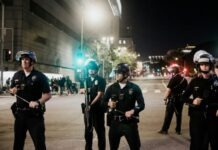
Voter participation shapes every major decision that guides the nation. Yet large parts of the public still face pressure points that hold back equal access to the ballot. Some barriers look obvious, while others appear subtle. Each carries serious weight for the future of fair elections.
Public debate often centers on high-profile disputes, but deeper structural issues shape the path to the ballot far more than many realize. Early evidence from advocates, analysts, and experts highlights a set of obstacles that deserve more attention. Support from groups such as the Campaign Legal Center often sheds new light on these concerns, and that support helps many citizens gain a fair route to participation.
Complex Rules That Change Too Fast
Many states revise voting rules at a rapid pace. Frequent shifts confuse voters who expect a familiar process. A sudden revision to deadlines, ID terms, or registration steps can produce major uncertainty.
Key pressure points include:
- Fast policy shifts that create gaps in public awareness
- Confusing paperwork terms that differ across counties
- Strict cutoffs that keep new voters out
Elections rely on clarity. Once clarity fades, trust weakens. Complex rules affect younger voters, new citizens, and those who do not track policy debates day to day.
Barriers That Limit Access Before Election Day
A number of states have reduced early vote locations or shortened access hours. This move hits citizens with tight schedules. Longer lines and fewer options deter participation.
How these limits expand the gap
- Fewer sites create heavy crowd pressure.
- Reduced hours force voters to rush.
- Rural areas lose access far faster than cities.
Tight access extends beyond early vote sites. Some areas face reduced drop box access. Others confront strict rules on absentee ballots. These shifts raise the cost of participation and strain public trust.
Identification Rules That Create Unequal Impact
Many states require specific forms of identification. Though supporters argue that ID rules add security, critics point to unequal access. Certain groups have limited access to formal documents due to cost or distance.
Some rural residents travel long distances to secure proper documents. Many older citizens lack updated records. Others face strict proof-of-residency rules that they cannot easily meet. The rules appear neutral on paper, but create an uneven impact across communities.
Why the debate remains intense
- ID rules vary widely across states.
- Citizens with low mobility face harder hurdles.
- Updates to IDs require time and resources.
Stronger support systems could reduce these gaps. Public awareness campaigns, fee relief, or mobile ID units can ease the strain if adopted widely.
Court Battles That Shape Future Access
Legal disputes over voting policy now appear in courts across many states. Some cases center on early vote rules, while others focus on mail ballots, ID terms, or map boundaries. A single ruling can reshape access for millions.
Court battles often move fast, leaving little time for clear communication. Sudden shifts spark confusion among communities that rely on timely guidance. These outcomes demand close review from policy experts across the country. Legal groups, such as the Campaign Legal Center, often highlight the importance of clear, fair, and durable policy frameworks that protect every voter’s right to a consistent process.
Fair access to the ballot stands at a critical point. Hidden barriers such as rapid rule shifts, strict ID terms, and staff shortages create pressure that future elections cannot ignore. Strong safeguards and clear public guidance can restore trust before the next major vote. A wide coalition of experts, advocates, and local leaders can push for solutions that meet the needs of every voter. The nation benefits when each citizen holds a clear, reliable path to participation.










